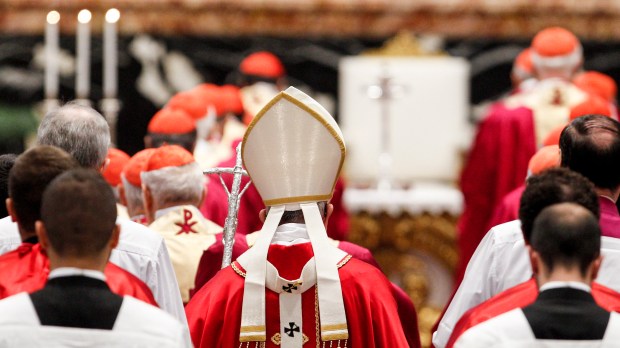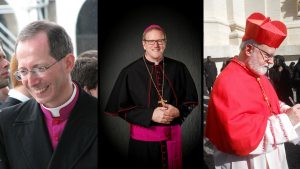In the Catholic Church, the office of cardinal is further split up into the three ranks of bishop, priest and deacon.
However, this rank has nothing to do with their ordination status, as most cardinals were previously ordained a bishop before receiving the special office of cardinal.
The ranks have their basis in an ancient hierarchy that is traced back to the early Church in Rome.
Initially the rank of cardinal was given to bishops, priests and deacons who had specific functions in Rome.
Cardinal priests
According to the Catholic Encyclopedia, “the term Cardinalis applied at Rome from the end of the fifth century to priests permanently attached to the (twenty-five to twenty-eight) Roman tituli, or quasi-parishes (quasi diæceses), belonging to the church of the Bishop of Rome.”
Cardinal deacons
Cardinal deacons, on the other hand, were appointed to seven distinct “regions” of the city of Rome. More specifically, “for the care of the poor the city was divided into seven regions, each of which was administered by a deacon.”
Cardinal bishops
As the Church began to grow and flourish, the pope was in need of more help in administration. Cardinal bishops were then chosen to be representatives and participate in various synods to discuss ecclesial affairs, as explained by the Catholic Encyclopedia.
In the course of time and according as the papal headship of the Church manifested itself more and more, the volume of ecclesiastical and temporal business increased greatly at Rome, in consequence of which the popes called in neighboring bishops to represent them at episcopal functions and to aid them with their counsel.
Eventually it became a custom to confer the title of “cardinal” only on bishops within the Church, but the office continues to retain these three separate ranks, which come with it various duties.
For example, according to the Catholic News Agency, “the Dean of the College of Cardinals, elected from among the cardinal bishops, presides at the conclave for the election of the pope. The Dean has also the responsibility to communicate the pope’s death to the diplomatic corps accredited to the Holy See and to the heads of nations, he represents the Holy See during the sede vacante, and he is the one who asks the pope-elect if he accepts the election, and what name he will take.”
Cardinals retain these ranks today, honoring this ancient tradition, as well as dividing up important roles within the Church hierarchy.



